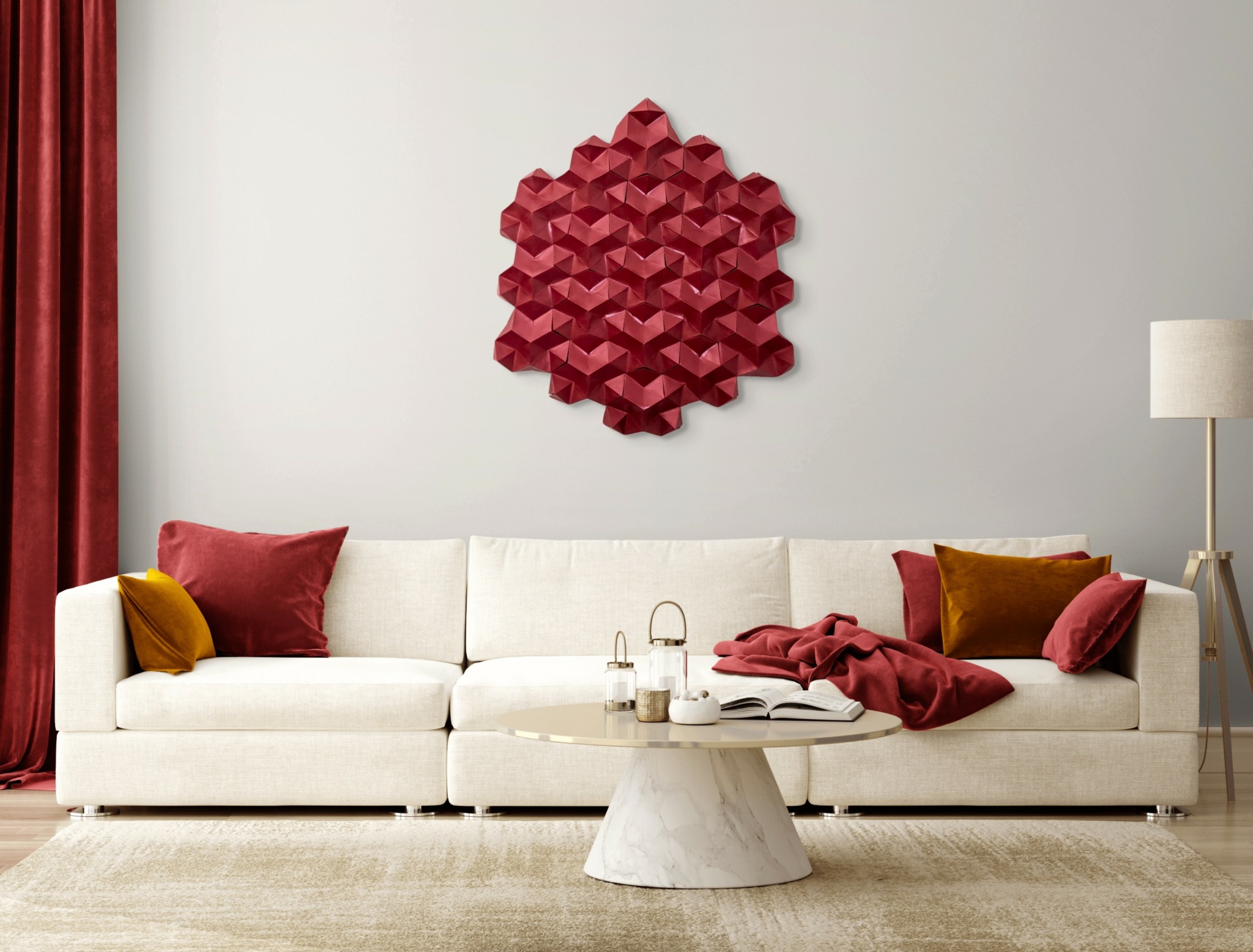We were lucky to catch up with Melanie Wong recently and have shared our conversation below.
Melanie, appreciate you joining us today. We’ve love to hear an interesting investment story – what was one of the best or worst investments you’ve made? (Note, these responses are only intended as entertainment and shouldn’t be construed as investment advice)
Definitely investing in a Cricut cutting machine and a craft table are my best investments.
The Cricut helps me create origami artwork more efficiently. Before, I got the Cricut, I needed to have iron-clad focus to fold heavier paper precisely and cleanly. Because my origami is more sculptural, I prefer to use mediumweight to heavyweight archival paper over using traditional lightweight origami paper. The downside to using heavier paper is that you need to score the paper beforehand to minimize puckering with each fold. Having a machine to make score lines makes the process easier.
As for the craft table, it has made the process of painting and varnishing archival paper more efficient. Before, I used half of my dining table, which resulted in a slow artmaking process. Having dedicated space to create and store art has helped me separate my studio time and personal time both physically and psychologically. My work days involve doing some chores in the morning and spending studio time that involves prototyping, photography and editing, or creating a sellable artwork. The rest of my work hours, I spend on administrative tasks for my art business such as email marketing, website maintenance, lead generation and outreach, and applying to art opportunities.

Great, appreciate you sharing that with us. Before we ask you to share more of your insights, can you take a moment to introduce yourself and how you got to where you are today to our readers.
I’m an origami mixed media artist who creates origami sculptures out of folded archival paper attached to wood panels. My work explores the essence of resilience of triumph in the face of pain and despair through unique 3D arrangements of color and shapes. While paper origami tends to be a delicate and temporary art, I always create work that is durable through my choice of materials that can withstand the test of time. Unlike many origami artists, I primarily work with medium to heavy weight paper to add a more sculptural look and feel to my work. Although this may seem intriguing, working with heavier paper has its drawbacks as it is more difficult to fold freely without puckering and requires scoring folds to make each crease crisp and clean.

Learning and unlearning are both critical parts of growth – can you share a story of a time when you had to unlearn a lesson?
One of the lessons I had to unlearn was that no one wants to pay a lot of money for small art. As an origami artist, my strengths are within the fine details of my work. It was crushing to hear this from an artist I admired and prevented me from being productive in my studio. I was still very early in my art career and my confidence was dwindling. However, I realized that when I tried creating primarily for others, I ended up creating for no one. This got me to create my first major work, a set of three 18 inch by 36 inch panels of pink and gray origami modules called “The Fading Princess” based off of my experience in a very unsympathetic mental health system as a child and how I was able to succeed as a high-functioning student despite being stereotyped by mental health professionals. “The Fading Princess” has been my most well-received work so far. I know the colors have limited appeal, but I’m glad I was able to get off my feet and make something I believe in. I’m more than willing to make the same work in a different color upon request, but getting started was more important.

For you, what’s the most rewarding aspect of being a creative?
By far, it’s being creative on my own terms. People often have a specific idea of what an artist is, someone who paints or draws or works to fund their art practice. Origami artists are often very good at mathematics and the sciences as well as art and I like to consider myself as both an artist and a scientist. This has isolated me from connecting with other artists because when I say I do origami people often assume I make small figurines when in reality, I like to make larger works composed of multiple modules. What keeps me on track is looking up to the art scientist of origami such as Erik and Martin Demaine, Robert Lang, and Goran Konjevod, all of who are amazing origami artists and are equally amazing scientists.
Contact Info:
- Website: https://aimeiri.com
- Instagram: https://instagram.com/aimeiridesigns
- Linkedin: https://linkedin.com/in/melaniehom




